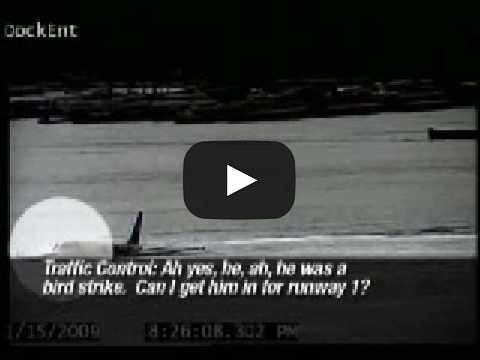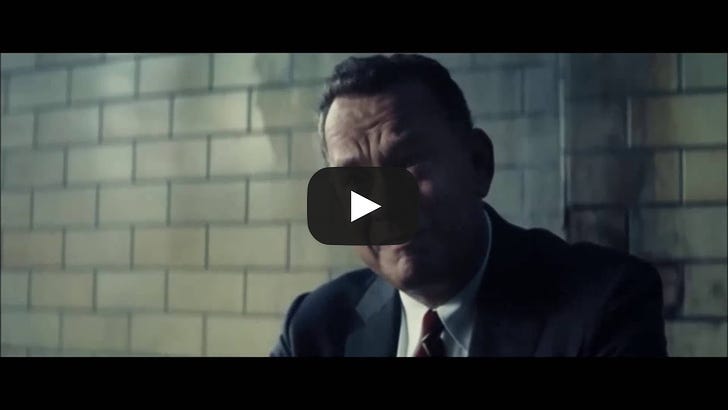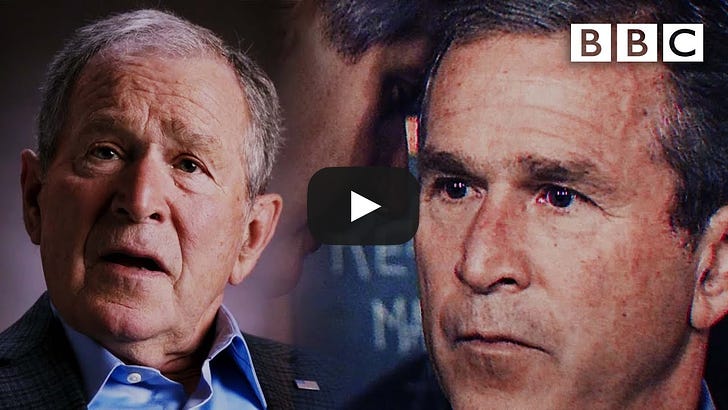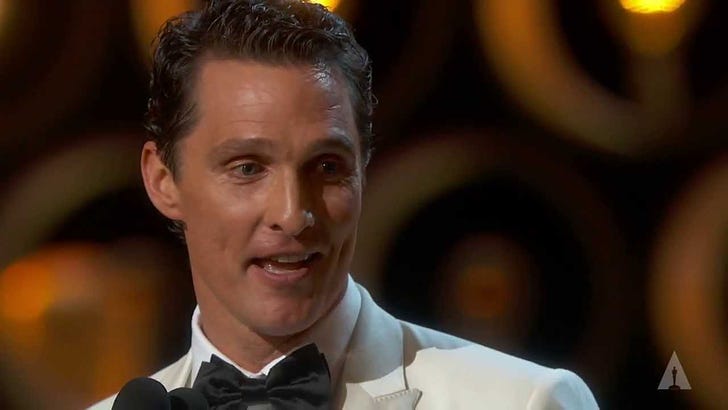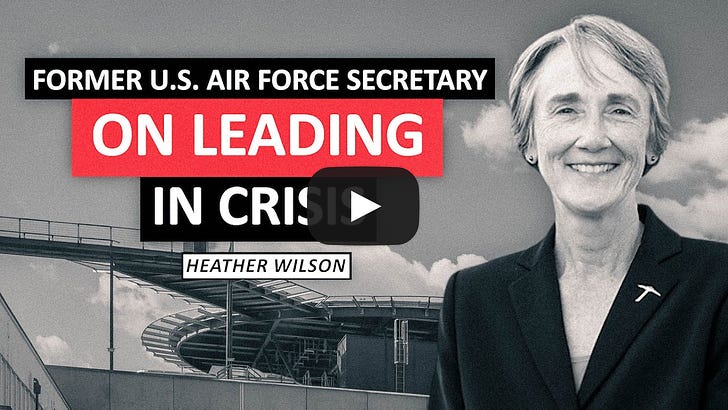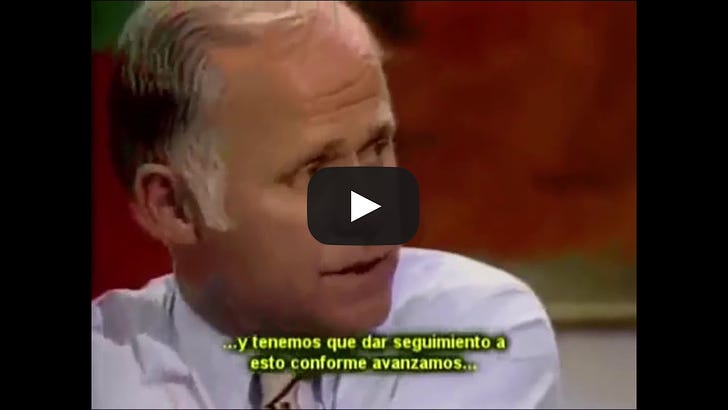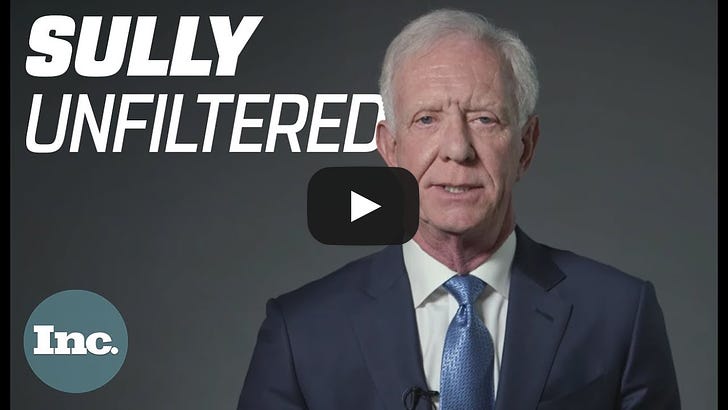9 Techniques to Help You Become a ‘Master of Disaster’ in Any Crisis
9 Techniques to Help You Become a ‘Master of Disaster’ in Any CrisisThis is a deeply-reported, practical guide to conquer any crisis — in career and in life
What does it mean to be a “master of disaster” in a moment of crisis? It’s someone who rises above the panic, sidesteps impulse, and hones in on the actions that actually make a difference in moments that matter. Think of Captain Chesley “Sully” Sullenberger calmly telling air traffic control, “We may land in the Hudson.” Imagine fitness star Robin Arzón, face-to-face with a gunman, staying cool enough to de-escalate the situation. These are people who didn’t simply react—they took control of the crisis. Whether it’s a corporate scandal, a natural disaster, or a personal emergency, the ability to navigate through turbulent times is a skill that separates true leaders from the rest. In this article, we’ll explore 9 powerful techniques used by some of the world’s most effective crisis managers. From airline pilots to astronauts, from presidents to CEOs, these individuals have faced unimaginable pressure and emerged victorious. Here’s how you can develop the skills necessary to conquer any crisis. (Chris Anselmo, author of Hello Adversity, contributed to this article.) 1. Before they take any action, they sound the alarm bellsBefore you make a decision on how to fix the problem, you must notify someone that there is a problem in the first place. You may remember the “Miracle on the Hudson.” On Jan. 15, 2009, U.S. Airways Flight 1549 took off from New York’s LaGuardia Airport at around 3:26 p.m. On board were 150 passengers, two pilots, and three flight attendants. Just a few minutes after takeoff, the plane collided with a flock of Canada geese. Both engines ingested birds and were damaged, causing an almost complete loss of power. Captain Chesley “Sully” Sullenberger and First Officer Jeffrey Skiles quickly realized the plane wouldn’t be able to return to LaGuardia or reach any other nearby airport. Faced with this critical decision, Sully chose to attempt a controlled water landing on the Hudson River. As the plane descended, Sully calmly radioed air traffic control to alert them about the situation. In the cockpit audio below, listen to how he says, “We may land in the Hudson.” Total calm. Total clarity. Here’s what’s interesting from this call: Sully knew what he had to do, which was to land in the Hudson. But before he took any action, he alerted air traffic control. Once he heard all of his options, he discarded the controller’s suggestions and made the executive decision to conduct a water landing. When you’re in a high-stakes, crisis situation, the human instinct is to act swiftly in effort to fix the problem. But the biggest — and arguably most important step — is alerting someone there is a problem in the first place. They can help with suggestions, ideas, or in dire situations, even rescue crews. (All 155 people on board survived.) Don’t try to solve the problem alone. Sound the alarm bells first and take action second. 2. They tame their ‘caveman reaction’ by differentiating between ‘danger’ and ‘fear’When Captain Sully realized the plane was in trouble, his body reacted first. “My body responded immediately in a very normal, human way to this sudden life-threatening stress,” he says. “I could feel my pulse shoot up, my blood-pressure spike, my perceptual field narrow in tunnel vision because of my stress.” Then, he had the following three conscious thoughts: “This can’t be happening. This doesn’t happen to me. This flight will not end on a runway.” Once he let the initial, knee-jerk reaction run its course, he was able to think logically and focus on the task at hand. But how? Astronaut Chris Hadfield opens his TED Talk, What I Learned From Going Blind in Space, with a question for the audience: “What is the scariest, most dangerous thing you’ve ever done, and why did you do it?” He believes you can re-program your primal fears by taming your “caveman reaction.” Understanding the difference between perceived danger and actual danger can help you avoid your instinct to panic. Hadfield has faced numerous harrowing situations: he went temporarily blind during a spacewalk, disposed of a live snake while piloting a plane, and fixed an ammonia leak on the space station. In all those absurd situations, he managed to keep his cool. Remember, he says, “the danger is entirely different than the fear.” Here’s an example: When you first learned how to ride a bike, you were fearful because you could crash and hurt yourself. Then, as you got better and more confident in your skills, it became silly to be afraid of a bike. Yet the bike itself didn’t change — it remained just as dangerous as it always was. “Things aren’t scary,” Hadfield says. “People get scared.” So how do you tame your “caveman reaction?” Hadfield says you have to start way before the moment of crisis.
The next time you think you are in a crisis, ask yourself: “Is this situation actually dangerous, or am I perceiving it as such simply because I am scared?” Hadfield says the ultimate antidote to fear of anything is changing your level of competence. “Competence means keeping your head in a crisis, sticking with a task even when it seems hopeless, and improvising good solutions to tough problems when every second counts,” he says. Remember, don’t assume your first reaction is the ultimate truth. Your first reaction is likely just an avalanche of emotions and nothing more. Enjoying this? For more like this, make sure to sign up for The Profile here: 3. They combat panic by knowing worry won’t helpWhen facing a personal or professional crisis, our instinct often leads us to worry, panic, or imagine worst-case scenarios. In the film Bridge of Spies, Tom Hanks plays lawyer James Donovan, who is tasked with defending an accused Soviet spy during the Cold War. In multiple scenes, Donovan is struck by how the spy, Rudolf Abel, remains calm, even in life-threatening situations. At one point, Donovan asks Abel, “Do you never worry,” to which Abel responds with, “Would it help?” Abel’s repeated response, “Would it help?” becomes a powerful mantra, demonstrating how staying composed helps him navigate difficult circumstances. You can see it below: 4. They slow down their thinking to get to a place of ‘deliberate calm’Joseph Pfeifer found himself in an objectively dangerous situation on Sept. 11, 2001. As the first battalion chief to arrive at the World Trade Center that morning—due to his proximity to the North Tower—Pfeifer took charge amidst the chaos until his superiors could reach the scene. Pfeifer’s mind was racing as he thought about everything that was before him, and everything that needed to be coordinated. He needed to set up a command post and a staging area while also assigning responsibilities in real-time. Hundreds of firefighters were about to descend on the World Trade Center, and the more chaos they’d encounter, the more challenging it would be to coordinate a rescue. He knew he needed to slow his mind so that he wouldn’t panic and freeze. In his memoir, Ordinary Heroes, he writes:
“What do I need to do right now” is a question that prevents you from spiraling into debilitating anxiety. This approach allows for a clearer view of immediate needs and available resources, avoiding reactionary decisions that might worsen the crisis. Pfeifer arrived to a gruesome scene. People were dead, and some were alive but horribly burned. But he knew, he had one job at that moment — to take command. It’s not that he didn’t care, he just had to do what needed to be done. The other firefighters could help with the injured civilians, while he had to prioritize taking command. He wrote:
Pfeifer shares that ‘deliberate calm’ allowed him to focus on prioritizing actions in the unfolding disaster. He describes moments where he took deep breaths and forced himself to step back mentally from the chaos. This conscious slowing down helped him make better, more effective decisions, such as coordinating firefighters’ movements up the North Tower while balancing the emotional weight of knowing his own brother was in the building. Speaking to yourself out loud and repeating a mantra like, “one thing at a time” reminds your brain to focus on one task at a time without getting lost in the sea of endless needs. It allows you to clarify your thinking, but it also allows you to take charge in the moments that matter most. 5. They use their situational awareness to project a sense of calmOn September 11, 2001, President George W. Bush was visiting a Florida elementary school to promote his education initiatives. While Bush was reading to the children, his Chief of Staff Andrew Card came up to him, leaned in, and famously whispered, “A second plane hit the second tower. America is under attack.” At this moment, Bush chose to remain calm and continue with the event for several minutes to avoid alarming the students. “During a crisis,” he says, “it’s important to set a tone and not to panic.” Note how Bush’s demeanor changes as he stares off into the distance in shock and tightens his lips. He said that he didn’t want to do anything dramatic that would “rattle” the kids by reacting too visibly or suddenly leaving the room, which might have added to a sense of chaos. He noted that his mind was racing with thoughts on the gravity of what had happened and the need for decisive action, but he appeared calm out of consideration for those around him. But what happens when you’re caught in a moment of crisis where every second counts and you don’t have time to collect yourself? How do you react? When Peloton superstar instructor Robin Arzón was an undergrad at New York University, she was held at gunpoint at a wine bar in Manhattan. “I just remember that I needed to humanize the situation,” she says, remembering that she began asking the gunman about his family and telling him the people in the bar had families too. “I became this pseudo-negotiator at 20 [years old] having no idea what I was doing, but he needed to know that these people are humans too.” As I mentioned in my article, How to Become a Master Negotiator Using These 7 Practical Negotiation Techniques, speaking out loud in a smooth, calming voice can actually soothe both yourself and those around you. The reason this type of voice control is effective is because it hits the mirror neurons in your counterpart’s brain and triggers a neurochemical reaction that calms them down. In turn, it creates an involuntary response of clearheadedness in both parties. ‘Masters of disaster’ often project calm to set the tone for those around them. They understand that their reaction has the power to either foster calm or incite chaos. If you like this learning guide, you may enjoy this one on charisma:
6. They are willing to get ‘skewered’ in the name of making the right decisionOn Nov. 5, 2017, a gunman entered a Texas church and opened fire, killing 26 people in the largest mass shooting in the state’s history. Heather A. Wilson, who was the Secretary of the Air Force at the time, witnessed the tragic unfolding of events, and then got a call from the Inspector General. He told her that he thought the shooter was a former airman who had been discharged. “We found out that not only had he been an airman who had been discharged, but that under the law, the Air Force should have notified law enforcement and put him on a list that prohibited him from purchasing a weapon — and we failed to do that,” she told The Profile. As the Secretary of the Air Force, Wilson had to make a decision on how to handle this. One of the lawyers around the table suggested that she mitigate risk by issuing a statement with general language that told the public the Air Force is looking into it. Wilson didn’t like that suggestion. “We know what the truth is,” she said. “We’re much better off owning up to what we know and fixing it than trying to suggest that we’re further evaluating and investigating it. We were much better off just owning up to it and fixing the problem.” Someone else chimed in with another suggestion: “Blame it on your predecessor.” But Wilson was resolute. She would take responsibility and go on to work with the FBI to fix the underlying record system to prevent mistakes such as this one from happening again. In the end, a federal judge ordered that the Air Force pay more than $230 million in damages to survivors and victims’ families of for failing to flag the conviction that might have kept the gunman from legally buying the weapon used in the shooting. The Air Force took corrective action by reviewing all case files since 1998. They also updated all criminal history reporting requirements that could prevent someone from purchasing a firearm. Wilson told me something I’ve never forgotten: “You always have to know the difference between the advice and the command decision. They are there to provide advice, not to decide.” She adds: “There is no substitute for the decision-making by the people responsible for the outcome. It may have been the harder decision in the short-term because you are going to get grilled, you are going to get skewered the next day. But in the long-term, it was the right decision.” James Burke is another leader whose swift decision-making in a crisis situation earned him major respect and even helped bring the company back from the brink. In 1982, Tylenol had been the most successful over-the-counter product in the United States with over 100 million users. Tylenol had been responsible for 19% of Johnson & Johnson’s corporate profits during the first three quarters of 1982. Then the unthinkable happened. Someone within the company replaced Tylenol Extra-Strength capsules with cyanide-laced ones, resealed the packages, and placed them on the shelves of at least half a dozen pharmacies and food stores in the Chicago area. Seven people died as a result of ingesting the cyanide-laced Tylenol capsules. Burke, who was CEO of Johnson & Johnson at the time, first found out about this tragedy from a reporter who called to ask him for comment. Once he was aware, he created a seven-person internal team to execute on the following tasks: 1) Protect customers and 2) Save the company. As a result, Burke spent $100 million to recall 31 million bottles of Tylenol and re-launched the product two months later in tamper-proof packaging. (Yes, this is how the foil seal on medicine bottle caps became industry-standard.) Here is Burke reflecting on his crisis-management response: Similarly to Wilson, Burke notes that the lawyers were heavily opposed his decision to own up to it. They advised him otherwise. But just like Wilson, he knows the short-term skewering is worth the long-term building of trust. “Trust has been an operative word in my life,” Burke said. “[It] embodies almost everything you can strive for that will help you to succeed. You tell me any human relationship that works without trust, whether it is a marriage or a friendship or a social interaction; in the long run, the same thing is true about business.” When most people find themselves in a crisis, their knee-jerk decision is to minimize, blame, or even outright lie. Those decisions may feel more soothing in the short-term, but they are catastrophic in the long-term. You have to start from a place of truth. What can you own and take responsibility for? A good solution always starts with a problem. As Wilson said, taking responsibility is the more difficult decision in the short-term, but it’s the right one in the long-term. 7. They know that courage is contagious so they use words rich with meaningCourage is contagious, so many ‘masters of disaster’ choose words rich with meaning that evoke a certain emotion in those around them — especially in moments of crisis. Right before Captain Sully landed the plane into the Hudson river, he made one single announcement to the cabin of passengers. “Before I made it, I knew it would be the most important PA announcement of my life,” he says. “I took what was probably an extravagant amount of time — three or four seconds — to choose my words very carefully before I spoke.” He adds, “I wanted to sound confident, not agitated, because I knew that courage can be contagious.” Sully knew he had to choose words rich with meaning so that the flight attendants knew exactly how to prepare the cabin in a moment where every second mattered. He chose the word “brace” to signal that an emergency landing was imminent and to prompt the crew to help passengers prepare for impact. The word “impact” vividly conveyed the impending situation to both passengers and crew, leaving no doubt about the gravity of the moment. The announcement Sully made was short but packed with meaning: “This is the captain. Brace for impact.” Those two confidently-uttered sentences prepared the crew, gave the passengers enough information not to break out into panic, and ultimately, saved lives. 8. They stabilize their nervous system with self-soothing techniquesWhat’s a life worth? That’s the question Kenneth Feinberg has been forced to answer as a mediator in nearly all of America’s crises. His job is to decide who receives compensation — and how much they should get — for their suffering. It’s not easy being the person America turns to in the wake of our worst catastrophes. People call Feinberg “the master of disaster” because his career is just one very long list of tragedies. — The September 11, 2001 terrorist attacks As the person in charge of overseeing compensation funds and figuring out who deserves payment, he’s no stranger to dealing with calamity. So how can you unburden yourself from the trauma of the world when crisis is … your job? Feinberg balances the worst of humanity by day with the best of humanity by night. “You go outside, you walk around the block, and you watch little kids playing in a playground, laughing and happy,” he says. “You buy an ice cream cone, sit on a bench in the park, and you try and clear your head. And at night, before you go to bed, you listen to classical music … the height of civilization.” In the face of unimaginable tragedy, finding moments of peace and beauty can be a powerful tool for maintaining perspective of the good. 9. They know that no matter what, life goes on.Jeff Immelt’s first day as CEO of General Electric was on Sept. 10, 2001. The next day, the terrorist attacks on the World Trade Center and the Pentagon shook the world, the financial markets, and GE’s business. The airplanes, one of them powered by GE engines, crashed into the WTC towers, which were insured by GE Capital. At the time, GE was heavily invested in commercial aviation, insurance, and media — all three of which were rocked by Sept. 11. And unbeknownst to Immelt at the time, the challenges ahead were many. The terrorist attacks would be the first of a number of crises that Immelt had to grapple with in his time as CEO. He was at the helm of the company through the bursting of the dot com bubble, the Fukushima Daiichi nuclear disaster, the fall of Enron, and the 2008-09 financial crisis. “You learn to hold two truths,” Immelt says. “You learn to say, ‘Things can always get worse, but here’s a dream that I have for the future, and I’m not going to give up on that.’ You learn how to make decisions even when you don’t know all the facts. In a crisis, you just got to make decisions.” Unfortunately, many of the decisions that Immelt made in his 16 years at the helm of GE did not pan out in his favor nor were they particularly popular. At one point during his tenure, he characterized his role as CEO in this way: “I feel like I want to vomit all the time.” Shareholders blamed Immelt for his inability to turn the company around and for allowing GE to lose $150 billion of market value under his watch. But one thing that struck me is that Immelt’s turbulent professional life did not affect the quality of his personal life. “The fact of the matter is that I have a really great wife and a great daughter. And they were always really unaffected by what I was doing,” he told me. “There were days when hundreds of thousands of people hated me, but one person loved me, and that was enough to keep persevering into the future.” He knew that despite his crisis-ridden tenure at GE, life would eventually go on. War photojournalist Lynsey Addario is another person whose job requires an ability to navigate crisis. Over the past two decades, she has covered every major conflict and humanitarian crisis on the planet. As she sees the destruction and the pain through the lens of her camera, her images translate that intense emotion to people across the globe. Addario had a number of close calls on the job — she has been kidnapped in Libya, abducted in Iraq, and injured in a car accident in Pakistan. But the one consistent thread throughout Addario’s career is that she never puts the camera down — even in the face of extreme danger. If there’s one lesson she’s learned about the human experience it’s that no matter what is going on in the world, life goes on. Even in the midst of war, Addario shows scenes of people celebrating birthdays, weddings, and graduations. “In the darkest moments, I witness resilience, I witness generosity, I witness people being kind to one another and helping each other,” she says. So I’ll leave you with one quote to keep in mind if you ever find yourself in the difficult moments after navigating a crisis. You can choose to live in peace despite the trauma and brutality that goes on in the world. It’s a necessary reminder. As Addario says, “I choose to live in peace and witness war—to experience the worst in people but to remember the beauty.” … For more like this, make sure to sign up for The Profile here:Check out more of The Profile’s learning guides here:
You’re currently a free subscriber to The Profile. For the full experience, upgrade your subscription.
© 2024 The Profile |

